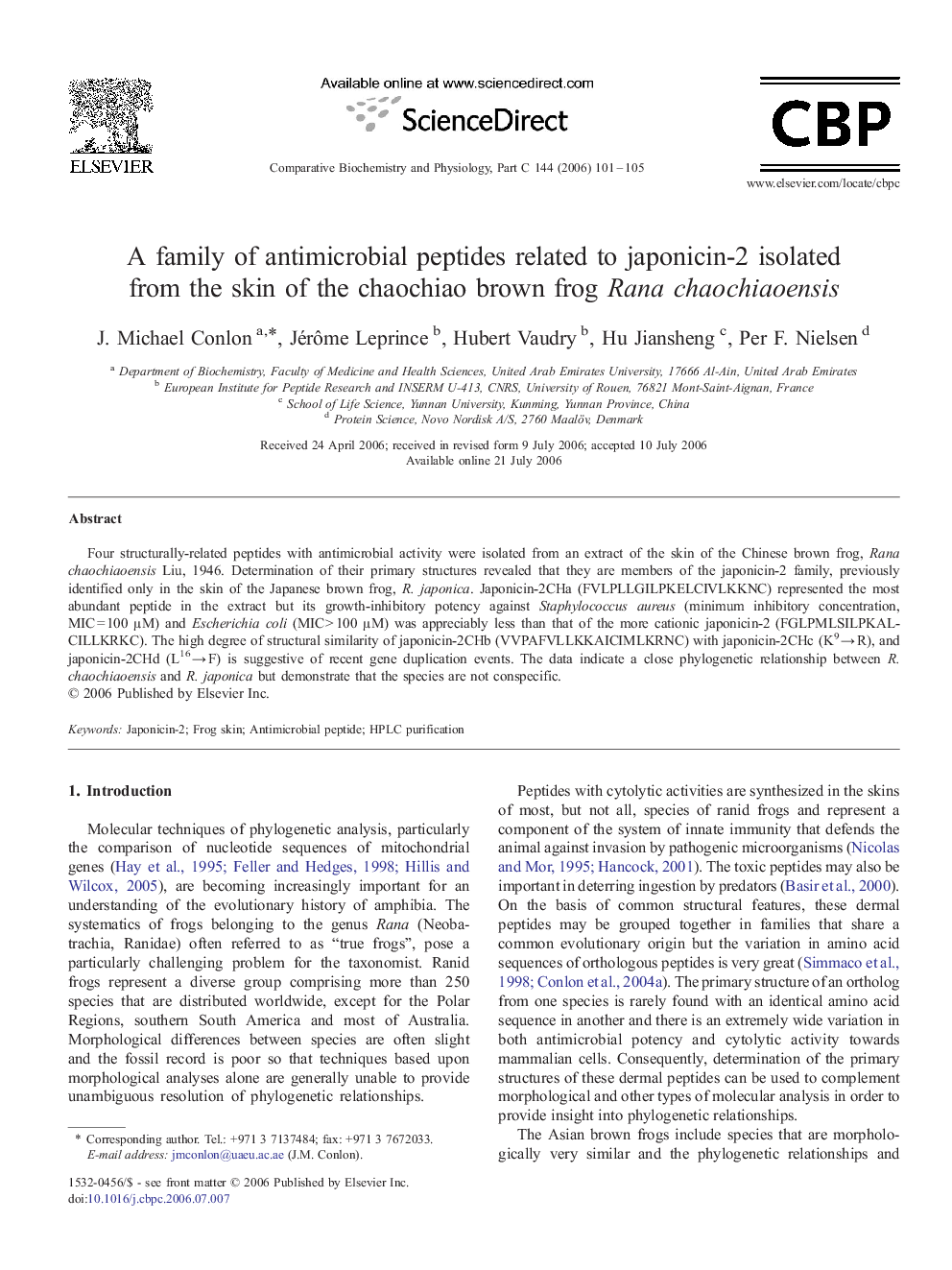| Article ID | Journal | Published Year | Pages | File Type |
|---|---|---|---|---|
| 1978125 | Comparative Biochemistry and Physiology Part C: Toxicology & Pharmacology | 2006 | 5 Pages |
Four structurally-related peptides with antimicrobial activity were isolated from an extract of the skin of the Chinese brown frog, Rana chaochiaoensis Liu, 1946. Determination of their primary structures revealed that they are members of the japonicin-2 family, previously identified only in the skin of the Japanese brown frog, R. japonica. Japonicin-2CHa (FVLPLLGILPKELCIVLKKNC) represented the most abundant peptide in the extract but its growth-inhibitory potency against Staphylococcus aureus (minimum inhibitory concentration, MIC = 100 μM) and Escherichia coli (MIC > 100 μM) was appreciably less than that of the more cationic japonicin-2 (FGLPMLSILPKALCILLKRKC). The high degree of structural similarity of japonicin-2CHb (VVPAFVLLKKAICIMLKRNC) with japonicin-2CHc (K9 → R), and japonicin-2CHd (L16 → F) is suggestive of recent gene duplication events. The data indicate a close phylogenetic relationship between R. chaochiaoensis and R. japonica but demonstrate that the species are not conspecific.
